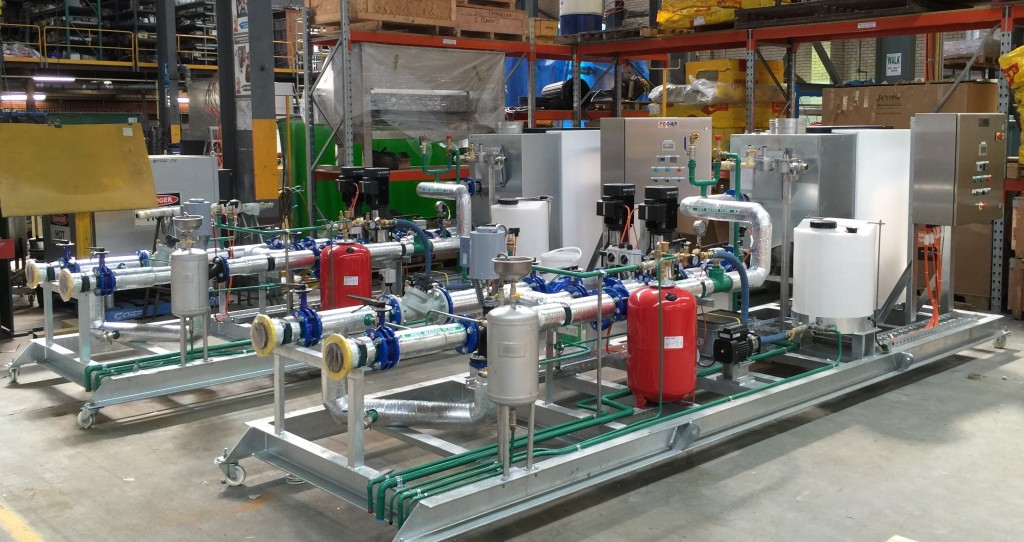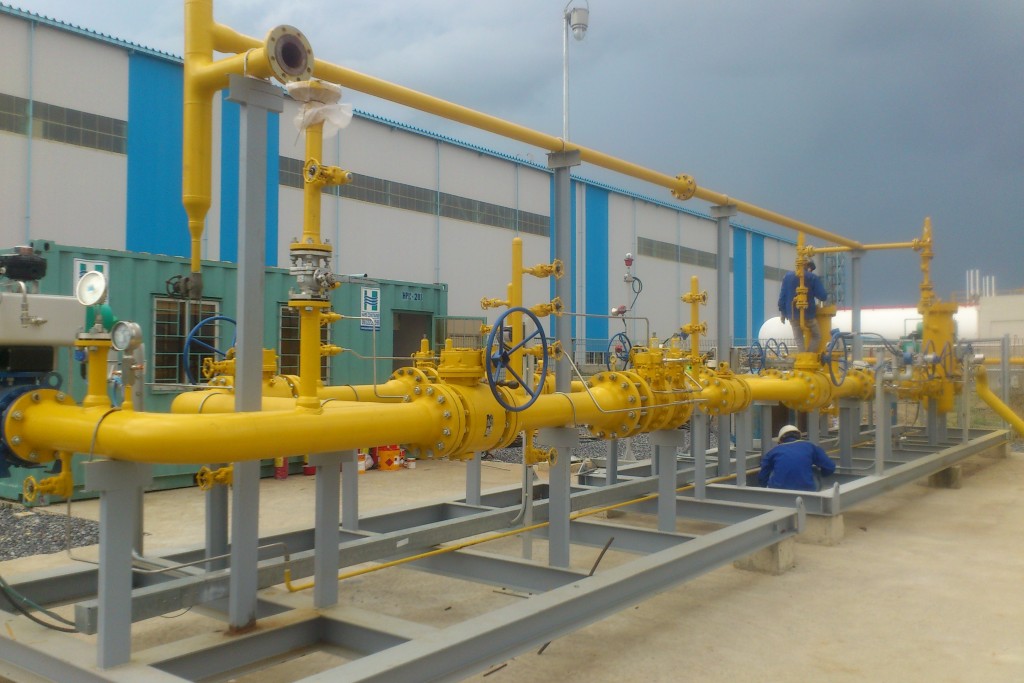City Gates Stations Natural Gas
 A City Gate Station is a gas measurement and pressure regulating and reducing package which is installed outside the limits of a city on a gas pipeline. It supplies gas to the city users at required consumption pressure.
A City Gate Station is a gas measurement and pressure regulating and reducing package which is installed outside the limits of a city on a gas pipeline. It supplies gas to the city users at required consumption pressure.
The natural gas for most distribution systems is received from transmission pipelines and fed through one or more city gate stations, sometimes called town border or tap stations. The basic function of these stations is to meter the gas and reduce its pressure from that of the pipeline to that of the distribution system. The latter operates at a much lower pressure (reduced from approximately 500–1,400 psig to about 0.25–300 psig). Figure 1.2-5 shows a city gate station that would typically be covered with a fiberglass enclosure or metal building to protect it from the weather.
Most city gate stations measure the gas flow with metering devices and reduce its pressure with pressure regulators. These devices control the rate of gas flow and/or pressure through the station and maintain the desired pressure or flow level in the distribution system. Gas received at city gate stations may or may not contain odorant, the compound that gives odorless natural gas its distinctive smell. Odorant must be added to the gas if it is received with insufficient or no odorant before the gas can leave the city gate station (the odorant concentration is normally three-quarters of a pound per 1 million cubic feet of natural gas).

